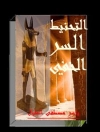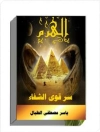An examination of the extraordinary texts produced by the community of St Cuthbert, showing how they were used to construct and define an identity.
Historical texts of all kinds were written in the community of St Cuthbert c.700-1130, from short annals to extended narrative history, political tracts and works on the lives and miracles of saints.At the same time, scribes in the community worked to copy and procure notable classics of historiography, from Classical Antiquity down to the Norman Conquest of England. But what did these various forms of writing about past events mean to their original authors and readers? What were these texts for?
This book offers a narrative of historiographical production within St Cuthbert’s community from the time of its foundation on the island of Lindisfarne, through subsequent translations to Chester-le-Street and Durham, down to the vibrant intellectual revival of the Anglo-Norman period. Focusing on several watershed moments in the story of this community, it identifies political, religious, intellectual andcultural triggers for historical writing, and argues that knowledge of past events gave successive guardians of Cuthbert’s cult their single most valuable tool in the continuous effort to define who they were, where they had comefrom, and what they hoped to continue to be.
CHARLES C. ROZIER is Lecturer in Medieval European History at Durham University.
İçerik tablosu
Appendix: Historical Writing with the community of St Cuthbert, c.700-1130
Introduction
Conclusion
The Origins of History Writing in the Community of St Cuthbert to c.750
Preserving the Past at Chester-le-Street, c.882-995
Establishing a new Cult Centre at Durham, c.995-1080
Constructing a Monastic Past and Future at Durham, c.1083-1115
Reinterpreting the Past in the Light of the Present, c.1080-1130
Placing Durham in Time: Writing Annals and Chronicles, c.1100-1130
Yazar hakkında
CHARLES C. ROZIER is Lecturer in Medieval Studies at the University of East Anglia, Norwich, UK.












